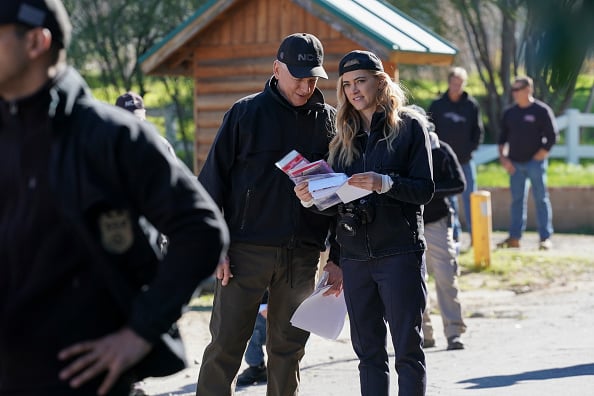‘NCIS’: What’s the Story Behind Frances Glessner Lee and Her Dollhouses?
NCIS Season 17, Episode 17, titled “In a Nutshell,” was a little creepy. With the help of a young woman being questioned about the murder of her brother, the team uses small dollhouses (called nutshells) created to look like crime scenes so they can solve a murder case. Here’s the story behind the dollhouse/nutshell and its real-life creator, Frances Glessner Lee.
Who was Frances Glessner Lee?

In one of the early scenes during episode 17, Gibbs sees Kasie and Sloane analyzing small structures that look like dollhouses. Instead of scenes of happy families enjoying a meal, viewers see bloody dolls lying on the floor, fatally injured. Each little house mimics a crime scene attached to an unsolved murder case.
When Gibbs sees Kasie and Sloane looking at the nutshells, he tells them to get back to work. However, they tell him they are working. “Really? You two look like you’re playing with dollhouses,” responds Gibbs. Ducky arrives, telling Gibbs the models aren’t dollhouses, but nutshells. He then explains who Frances Glessner Lee was and why she created them. “Back in the 1940s, there was a brilliant woman by the name of Frances Glessner Lee,” says Ducky. “She created a series of crime scene miniatures, which she called The Nutshell Studies of Unexplained Death.”
Lee was a millionaire heiress, reports The New Yorker. She modeled her work after real crime scenes. By the 1950s she and her assistants crafted 20 nutshells.
Kasie Hines explains the purpose of Frances Glessner Lee’s crime scene dollhouses
Kasie jumps in to add the miniatures were used in the training of homicide detectives and forensics students to help them analyze crime scenes. Lee and her team made an effort to include even the smallest details in each nutshell. In one of them, you can see accurate labels on canned goods in a deceased person’s kitchen cabinet. Lee said the point of being so detailed was to teach detectives and forensics students to pay attention to tiny details and not just obvious ones, according to The New Yorker.
How the ‘NCIS’ team relied on Frances Glessner Lee’s nutshells to solve a crime

In one of the miniatures, Gibbs notices a scene with a woman in a house that had a fire. The back of the nutshell has a label that says, “plain old electrical fire.” However, Gibbs did some digging and was able to solve the mystery of the woman’s death. He and the team discover the fire in the woman’s house wasn’t an accident. The fire was set on purpose by a man she knew who had a background as an electrician. The woman happened to be very wealthy, so she was a target.
Frances Glessner Lee’s legacy
Glessner’s work was featured at the Smithsonian American Art Museum. Back in 2017, the museum displayed her nutshells in an exhibition titled Murder Is Her Hobby: Frances Glessner Lee and The Nutshell Studies of Unexplained Death. Smithsonian curator Nora Atikson said in a video for the exhibition that the nutshells are still used in training today at the Office of the Chief Medical Examiner in Baltimore, Maryland.
Read more: ‘NCIS’: Interesting Facts About Ziva, Gibbs, and Tony’s Wardrobe
Follow Sheiresa @SheiresaNgo


